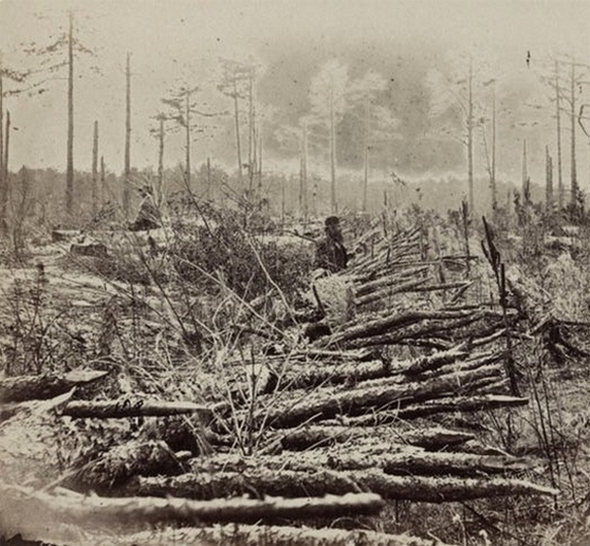Music on the Spotsylvania Earthworks
By May 11, Ulysses S. Grant’s Virginia campaign had been underway for one week. The men of both armies went through the blazing inferno of the Wilderness only to find themselves now huddled behind substantial earthworks ringing the landscape around Spotsylvania Courthouse.
On the evening of May 10, Union soldiers led by Col. Emory Upton led a narrow but dense assault against the Confederate earthworks. While the assault did not permanently pierce the enemy lines, it ushered in one of the most horrific moments in the Civil War on May 12: Spotsylvania’s Bloody Angle. But all of that was still in the future. For now, the men that participated in Upton’s charge on both sides vainly tried to come to grips with their experiences of the last week.
When Upton’s attack concluded in the evening hours of May 10 and the Federals pulled back to their own works, the field in front of Doles’ Salient was littered with the dead and wounded. The wounded, abandoned in their places, “sounded all night with their cries and groans,” recalled one Union officer. Another Federal, no doubt emblematic of so many other tired and exhausted soldiers seeking to come to terms with their experiences of the last week, “sat down in the woods and as I thought of the desolation and misery about me, my feelings overcame me and I cried like a little child.”
Behind the Confederate earthworks, the survivors faced the unfortunate reality of examining the field of dead and wounded laid out before them. “The situation was a sad one,” remembered a survivor in the 44th Georgia Infantry. A Confederate band gathered behind the earthworks and struck up the solemn tune, “Nearer My God to Thee,” a solemn reminder to all within earshot of their pending mortality. One Union band within earshot responded to its Confederate counterpart with the “Dead March.” The Confederates answered back with a jollier tune, “The Bonnie Blue Flag” capped by a resounding rebel yell. “The Star Spangled Banner” wafted back from the Federal lines followed by their own cheers and yells. Finally, the Confederate band played “Home Sweet Home.” When the instruments fell silent, men on both sides cheered tremendously before all ultimately fell silent.
The Confederate band’s choice of “Nearer My God to Thee” is especially poignant. It struck a chord that the United States and the Confederate States had reached by this point in May 1864 as battles spread from the tangled woodlots of Virginia to the Shenandoah Valley to the hills of Georgia and beyond. The war had taken a new turn and would bring many more men nearer to their maker before it was over.
*********************************
“Nearer My God to Thee” is a well-known hymn, supposedly played by the RMS Titanic‘s band while that ship sunk into the Atlantic Ocean. The band played to calm the nerves of the ship’s passengers during the panic. Perhaps that was envisioned by the Confederate band at Doles’ Salient.
If you have never heard the hymn or need a reminder of its tune, please visit this link for the audio of “Nearer My God to Thee.”

Its interesting how music has been used throughout modern military history. George Armstrong Custer had I left My Girl Behind Me as he and many of his troops went off to their deaths at the Little Big Horn and Lincoln had Dixie played in the front of the White House after General Lee surrendered. With the culture of America so fragmented people often can’t even sing the national anthem in a crowd. Maybe someday the old and young will someday sit around a camp fire and reminisce while listening as part of our culture today, I Want to Hold Your Hand.